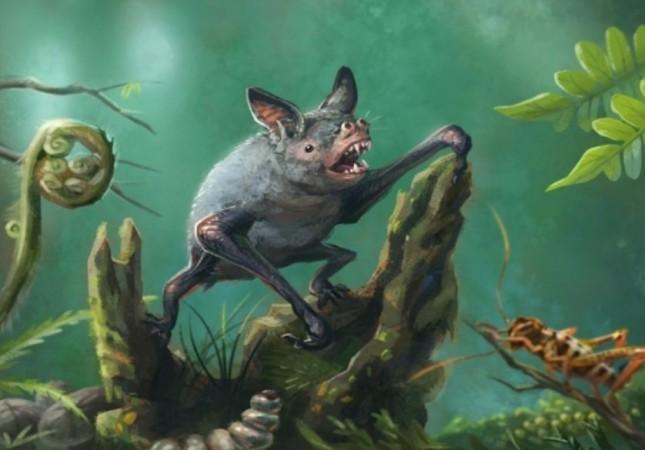
A team of international scientists has discovered fossilised remains of a giant burrowing bat that lived in New Zealand millions of years ago.
The remains, recovered from 19- to 16-million-year-old sediments, included teeth and bones of the pre-historic bat that was apparently about three times bigger than an average bat today. The study, led by researchers at the University of New South Wales, was published in the journal Scientific Reports on Wednesday.
Burrowing bats are strange because they not only fly, but also move hurriedly over the forest floor, under leaf litter and along tree branches while looking for both animal and plant food. Scientists said that this extinct burrowing bat, which had an estimated weight of about 40 grams, was the biggest of its kind ever discovered.
Named "Vulcanops jennyworthyae," the new species is also the first new bat genus to be added to New Zealand's fauna in more than 150 years, according to scientists.
"Burrowing bats are more closely related to bats living in South America than to others in the southwest Pacific," Sue Hand, an UNSW professor and the study's first author, said in a statement. "They are related to vampire bats, ghost-faced bats, fishing and frog-eating bats, and nectar-feeding bats, and belong to a bat superfamily that once spanned the southern landmasses of Australia, New Zealand, South America and possibly Antarctica."
New Zealand's burrowing bats that exist today eat insects that they catch on the wing or chase by foot. They also consume fruit, flowers and nectar, suggesting an extremely broad diet.
The specialised teeth and large size of the ancient giant bats in the question, however, suggest that they had a different diet that included eating even more plant food as well as small vertebrates.
"These bats, along with land turtles and crocodiles, show that major groups of animals have been lost from New Zealand. They show that the iconic survivors of this lost fauna – the tuataras, moas, kiwi, acanthisittid wrens, and leiopelmatid frogs – evolved in a far more complex community that hitherto thought," Paul Scofield of Canterbury Museum, a co-author of the study, said in the statement.
According to scientists, this diverse fauna lived in or around a 5600-square-kilometre prehistoric Lake Manuherikia that once covered much of the Maniototo region of the South Island.
During that time, temperatures in New Zealand were warmer than today. But as the climate started to cool down, it also gradually led to the overall loss in bat diversity in New Zealand, which now hosts only two bat species that today comprise the entire native land mammal fauna.









!['Had denied Housefull franchise as they wanted me to wear a bikini': Tia Bajpai on turning down bold scripts [Exclusive]](https://data1.ibtimes.co.in/en/full/806605/had-denied-housefull-franchise-they-wanted-me-wear-bikini-tia-bajpai-turning-down-bold.png?w=220&h=138)



